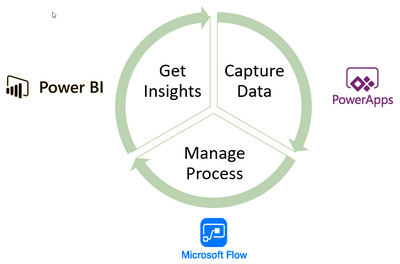This post has been republished via RSS; it originally appeared at: Healthcare and Life Sciences Blog articles.
Introduction
The transmission of health-care–associated pathogens from one patient to another via the hands of healthcare workers can be reduced, if not eliminated, by proper hand hygiene. The CDC and other organizations emphasize the importance of proper hand hygiene, and many healthcare providers perform various methods to measure and ensure hand hygiene. One of the most accepted and effective methods of measuring hand hygiene is known as direct observation.
Direct observation is the practice of using a healthcare worker trained in infection prevention to monitor other healthcare workers. Many of my customers utilize the direct observation method, but for most of them, this is a paper-based and manual process. The direct observer walks around the hospital with a pen and paper-based form, capturing insights and observations in a paper-based form. These forms are then mailed/faxed in, and manually entered into a reporting system.
A paper-based system of this nature has several obvious disadvantages, but for many healthcare providers, it is simply too costly to develop applications of this type, especially when the target device is a tablet or smartphone. This is where the Microsoft "Power" Platform can be of great value.
The Microsoft "Power" Platform
If you work with business process automation or improvement, you'll likely recognize a common pattern among most business processes: collect data, manage a process, and gather/monitor insights. Many customers (regardless of industry, I might add) manage these processes in the same way: they use their email inbox. Send an email. Ask for input. Get back input. Put into Excel. Repeat, and rinse.
There are many fantastic business process management/automation partners out there, but many of these systems are costly, and for many business processes, they are simply overkill. The Microsoft Power Platform is a great way to provide "no code" solutions to healthcare workers.

The Microsoft Power Platform consists of the following components:
- Microsoft PowerApps: Create compelling cross-platform user experiences without writing code.
- Microsoft Flow: Automate workflows and processes and connect systems.
- Microsoft Power BI: Connect to hundreds of data sources (SQL, Oracle, Teradata, SharePoint, ODATA, etc.) and rapidly create stunning data visualizations.
Core PowerApps and Flow capabilities are included with any Office 365 Business, Education, or Enterprise Subscription. Power BI has a "freemium" edition
The Solution
Leveraging PowerApps, Power BI, and a SQL Azure database, we were able to rapidly (think hours, not days or months) construct a simple solution that allowed Direct Observers to capture hand hygiene metrics at a facility using a mobile device. The Direct Observer simply selected the facility they were deployed at and captured the data with a simple form.
Did you know? You can also use the GPS capabilities of PowerApps to determine the facility.

Besides the obvious yes/no question (did the worker perform properly hand hygiene?), several data points are also gathered for additional context, including:
- What area/discipline (lab, nursing, tech, etc.) was the observation?
- What type of cleaning agent was used? Did they use gloves?
- When did the occurrence happen? Before/after eating? Before/after touching a patient? After exposure to body fluids?
- Was feedback (negative or positive) given to the clinician?
- Miscellaneous notes.

Pro Tip: Don't specify too many fields to capture. Capturing an observation should be quick and easy for the observer.
As the data from the observers is captured in real-time, Power BI can be used to track and monitor the status of hand hygiene across the organization. Insights on how facilities are performing can be scrutinized, along with the ability to view other facets like discipline, area, floor number, etc.. Power BI makes it very simple to ask questions of your data, and rapidly explore and drill down into details to gather insights that you may not have been aware of.
You could even "mash" this data up with data you might have (like infection rates in your facilities) and see if there are correlations and relationships in the data. For example, you may decide to explore investments in more hand sanitation devices or even strategic locations for hand wash stations. You can also host many of these components as custom tabs in Microsoft Teams, creating a collaborative "command center" for monitoring hand hygiene adherence across your organization.

Hand Hygiene tracking is one of the many ways the healthcare customers and providers can leverage their Office 365 subscription and the Microsoft Power Platform to rapidly enable scenarios that would have otherwise required costly custom development and testing.
Want to make it real? The sample database, PowerApp, and Power BI report can be found here.
Further reading:
- Power BI Healthcare Blog
- Power BI Partner Showcase with BlueGranite
- PowerApps Community
- Flow Community
